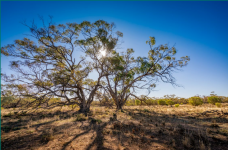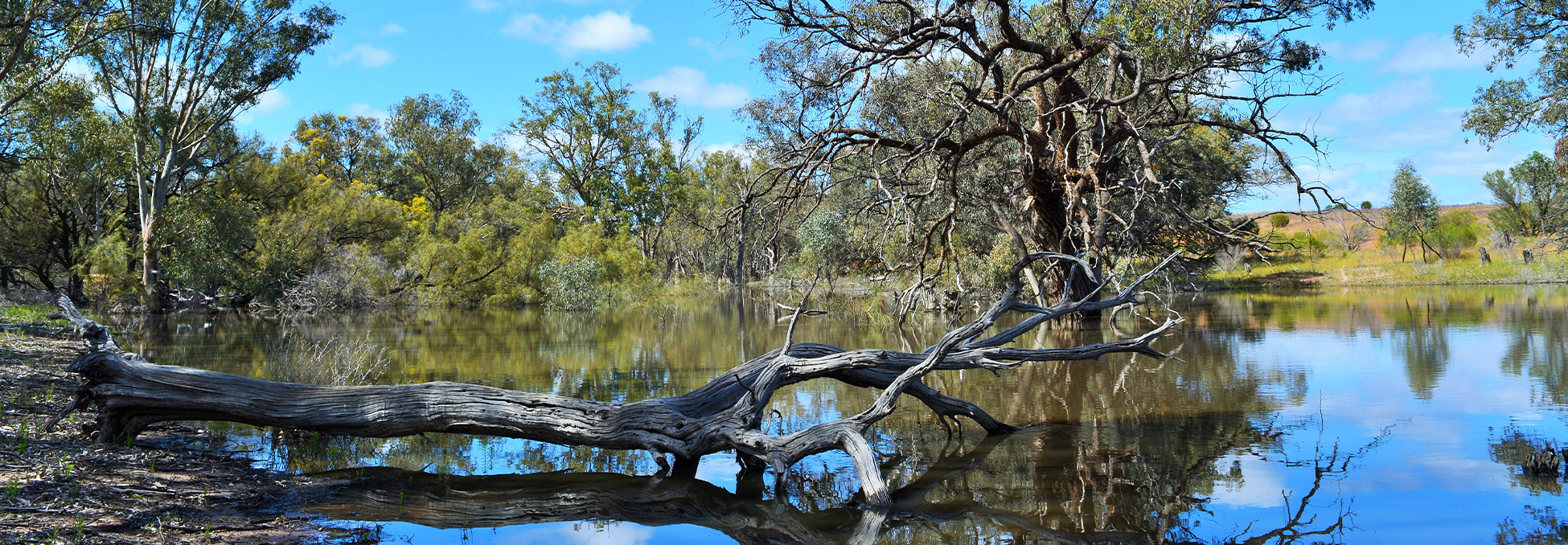Black Box trees
 Black Box (Eucalyptus largiflorens) is a dominant floodplain tree in the Murray–Darling Basin. They live in pretty rugged terrain, on the outer edge of the floodplain where it’s higher and drier, where floods visit less and less often.
Black Box (Eucalyptus largiflorens) is a dominant floodplain tree in the Murray–Darling Basin. They live in pretty rugged terrain, on the outer edge of the floodplain where it’s higher and drier, where floods visit less and less often.
Black Box are a key part of the floodplain ecosystem. They are important for canopy feeding bush birds such as superb fairy-wren, little friarbird and blue-faced Honeyeater. They also support insectivorous bats and the large hollows provided by these trees are used as nesting sites by regent parrots, sulphur crested cockatoos, mallee ringnecks, Major Mitchell’s cockatoo and barking owl. Common brushtail possums shelter in tree hollows and large reptiles such as the lace monitor and carpet python hide in the hollows and fallen logs.
Before the Murray River became a working river with managed flows, water would occasionally spill out over the banks, right up onto the floodplain to the roots of our sturdy Black Box warriors. The Black Box flourished and could continue for several years with only rainfall to quench its thirst.
River regulation, reduced inflows and climate change have interfered with nature’s capacity to deliver big floods and our Black Box trees are struggling. Unless we can manage flows to target our Black Box populations, we will most likely lose these trees, which could radically change the floodplain ecosystem.
Research spanning more than seven years at Hattah Lakes shows that watered trees are in better condition, flower more, and produce more seedlings than unwatered trees. This is great for bush birds such as parrots, honeyeaters, and wrens. A study at Hattah Lakes showed a 60% increase in bush birds for up to 3 years after a flood event, which shows the lasting effects of watering on tree health and the food resources they provide.
For more information download our Black Box resources
Fact sheet: Black Box tree response to TLM infrastructure (PDF, 2 MB)
Case study: Environmental works a lifeline for our floodplain Black Box trees at Hattah-Kulkyne National Park (PDF, 1.5 MB)
Ever wondered how to tell if Black Box trees are doing well?
Join David Wood, ecologist and program manager for The Living Murray at Mallee CMA, for a short walk through the Black Box trees at Hattah Lakes. These trees are in good condition thanks to receiving environmental water in 2017, and average/near average rainfall over the past two years. Not all our Black Box communities have been this lucky, which is why we are targeting them at several VMFRP sites.



